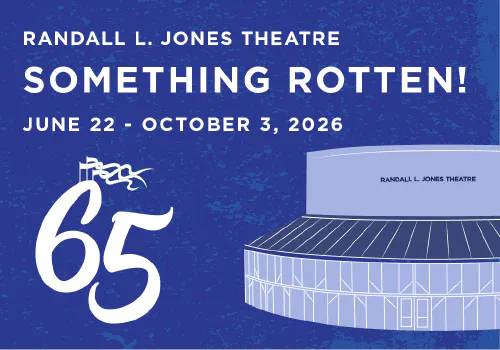By Ace G. Pilkington
It is hard to get from the facts of Shakespeare’s life to any sense of what it must have been like to have lived it. He was born in 1564 in Stratford-on-Avon and died there in 1616. The day of his birth is not certain, but it may have been the same as the day of his death—April 23—if he was baptized, as was usual at the time, three days after he was born. He married Anne Hathaway in the winter of 1582 83, when he was eighteen and she was twenty-six. He became the father of three children. The first was Susannah, who was born around May 23, close enough to the date of the wedding to suggest that the marriage was not entirely voluntary. Shakespeare’s twins, Hamnet and Judith, were baptized on February 2, 1585. Hamnet died of unknown causes (at least unknown by us at this distance in time) in 1596. Shakespeare’s career as actor, theatre owner, manager, and, of course, playwright began in the vicinity of 1590 and continued for the rest of his life, though there are clear indications that he spent more and more time in Stratford and less and less in London from 1611 on. His work in the theatre made him wealthy, and his extraordinary plays brought him a measure of fame, though nothing like what he deserved or would posthumously receive.
It’s hard to get even the briefest sense of what Shakespeare’s life was like from such information. It is probably impossible ever to know what Shakespeare thought or felt, but maybe we can get closer to what he saw and heard and even smelled. Perhaps some snapshots—little close-ups—might help to bring us nearer to the world in which Shakespeare lived if not quite to the life he lived in that world. In Shakespeare’s youth, chimneys were a new thing. Before that, smoke was left to find its way out through a hole in the roof, often a thatched roof, and there were even some who maintained that this smoky atmosphere was better than the newfangled fresh air that chimneys made possible—along with a greater division of rooms and more privacy.
In the year of Shakespeare’s birth, Stratford had more trees than houses—“upwards of 400 houses as well as 1,000 elms and forty ashes” (Peter Thomson, Shakespeare’s Professional Career [Cambridge: Cambridge University Press, 1992], 1). Peter Levi says, “The town was so full of elm trees that it must have looked and sounded like a woodland settlement. For example, Mr. Gibbs’s house on Rothermarket had twelve elms in the garden and six in front of the door. Thomas Attford on Ely Street had another twelve. The town boundaries were marked by elms or groups of elms (The Life and Times of William Shakespeare [New York: Wings Books, 1988], 7). Shakespeare’s “Bare ruined choirs where late the sweet birds sang” becomes a far more majestic image with the picture of Stratford’s elms in mind. And the birds themselves had a sound which modern ears no longer have a chance to enjoy. “We must realize that it was ordinary for . . . Shakespeare to hear a dawn chorus of many hundreds of birds at once. . . . as a young man thirty years ago I have heard a deafening dawn chorus in the wooded Chilterns, on Shakespeare’s road to London” (Levi 10).
Exactly what Shakespeare’s road to London may have been or at least how he first made his way there and became an actor is much debated. He might have been a schoolmaster or fifty other things, but he may well have started out as he ended up—as a player. We can then, in John Southworth’s words, “Picture a sixteen-year-old lad on a cart, growing year by year into manhood, journeying out of the Arden of his childhood into ever more unfamiliar, distant regions, travelling ill-made roads in all weathers, sleeping in inns, hearing and memorising strange new dialects and forms of speech, meeting with every possible type and character of person; learning, most of all perhaps, from the audiences to which he played in guildhalls and inns” (Shakespeare the Player: A Life in the Theatre [Gloucestershire: Sutton Publishing Limited, 2000], 30). At some time in his life—in fact, many times—Shakespeare must have known theatrical tours very like that.
In London itself, the new Globe, the best theatre in (or rather just outside of) the city, was in an area with a large number of prisons and an unpleasant smell. “Garbage had preceded actors on the marshy land where the new playhouse was erected: `flanked with a ditch and forced out of a marsh’, according to Ben Jonson. Its cost . . . included the provision of heavy piles for the foundation, and a whole network of ditches in which the water rose and fell with the tidal Thames” (Garry O’Connor, William Shakespeare: A Popular Life [New York: Applause Books, 2000], 161). The playgoers came by water, and the Globe, the Rose, and the Swan “drew 3,000 or 4,000 people in boats across the Thames every day” (161). Peter Levi says of Shakespeare’s London, “The noise, the crowds, the animals and their droppings, the glimpses of grandeur and the amazing squalor of the poor, were beyond modern imagination” (49).
England was a place of fear and glory. Public executions were public entertainments. Severed heads decayed on city walls. Francis Bacon, whom Will Durant calls “the most powerful and influential intellect of his time” (Heroes of History: A Brief History of Civilization from Ancient Times to the Dawn of the Modern Age [New York: Simon & Schuster, 2001], 327), had been “one of the persons commissioned to question prisoners under torture” in the 1580s (Levi 4). The opportune moment when Shakespeare became the most successful of playwrights was the destruction of Thomas Kyd, “who broke under torture and was never the same again,” and the death of Christopher Marlowe in a tavern brawl which was the result of plot and counterplot—a struggle, very probably, between Lord Burghley and Walter Ralegh (Levi 48).
Shakespeare, who must have known the rumors and may have known the truth, cannot have helped shuddering at such monstrous good fortune. Still, all of the sights, smells, and terrors, from the birdsongs to the screams of torture, from the muddy tides to the ties of blood, became not only the textures and tonalities of Shakespeare’s life, but also the information and inspiration behind his plays.










